Jorn and his wife, Haichong, quit their jobs, sold their house, downsized to a truck camper, and then hit the road full-time to explore North and Central America.
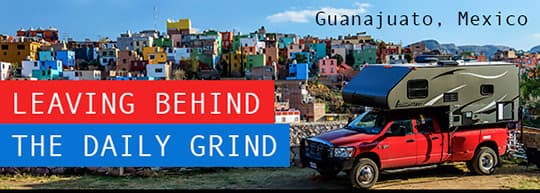
Ladies and gentlemen, please be careful with this story.
Reading about Jorn Vangoidtsenhoven and his wife, Haichong, may have you thinking seriously about telling your boss where to go, and how to get there. You may be tempted to email a real estate agent with the simple message, “Sell it, buster”. The next day you’ll be giving friends and family furniture, knick knacks, and your extensive “Freeze Dried Cheeses of the World” collection as you pare down to the essentials; eight cases of peanut butter, six pairs of underwear, a tooth brush, and a ready-to-roll truck camper rig.
Yes, this is the moment you’ve been waiting for your whole life. Freedom at last! No more work. No more cleaning the house. No more organizing that increasingly stinky cheese collection. You’re free, and ready for adventure from coast-to-coast, sea to shining sea, and beyond. Oh happy day! Let’s go truck camping!
As you can see, this story had little to no effect on us. Honest.
Perhaps the most incredible part of this story is that it’s true. Jorn Vangoidtsenhoven and his wife really did quit their jobs, sell their house, purge their stuff, buy a truck and camper, and go full-time. Then they had the courage to explore Central America this past winter, and Alaska this summer. That’s right, while you’ve been doing who knows what, these two have been exploring the beaches of Mexico and spotting bears in the Alaskan wilderness.
Like we said, be careful with this story. It’s inspiration overload.
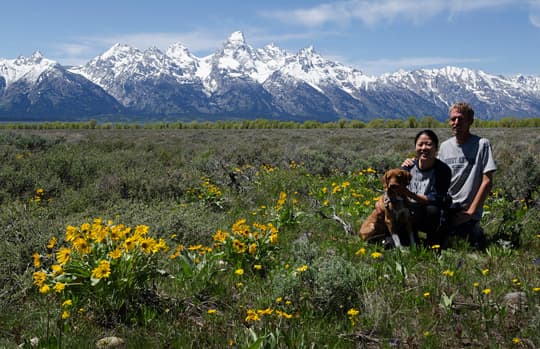
Above: Jorn and Haichong in Grand Teton National Park, Wyoming
TCM: How did you get into truck camping?
Jorn: Our first RV was a twenty-two foot Airstream travel trailer. On many occasions with the Airstream, our rig length was a problem. For instance, when we spotted wildlife close to the road and wanted to stop for a picture, it was often difficult to quickly find a spot, and pull-over. Having the travel trailer meant we couldn’t simply stop anywhere. After that experience, we wanted a more flexible camping solution.
When we decided to take a long road trip into Central America, we didn’t want to tow a travel trailer. First, the old colonial towns have narrow roads. Second, we wanted to explore remote areas and beaches. Our travel trailer wouldn’t work for this kind of trip.
A truck camper was the perfect solution. It’s big enough to have all the comforts that you find in a travel trailer, and small enough to stick on the back of the truck. With the truck being four-wheel drive, we could explore everywhere we wanted to go.
TCM: That certainly makes sense, but how did you get the idea to go full-time?
Jorn: My wife and I lived in Austin, Texas for eleven years with full-time jobs and schedules. Life is too short to spend on work alone, so we decided it was time for a break. We would use this break to see more of the big world we live in.
We thought about it for a few years before actually taking the plunge. Then, in the Spring of 2013, we quit our jobs, sold our home, and moved into our truck camper.
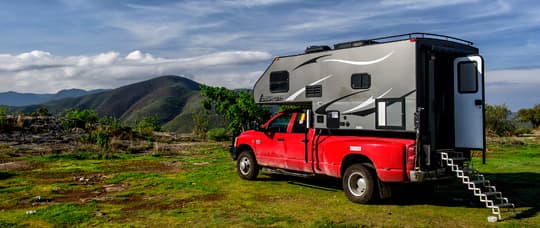
Above: 2008 Ram 3500 truck and 2014 CampLite 8.6 at Hierve el Agua, Chiapas, Mexico
TCM: That was quite the risk.
Jorn: Yes, it was. That’s why we thought long and hard about it before we decided to go for it. The fear of not being able to find jobs again once we stop traveling is what kept us in Austin until 2013.
Ultimately, our love for traveling beat our fear of an uncertain future. The sale of our home provided us with enough funds to take the leap into traveling. To make our travel time last as long as possible, we try to stick to a monthly schedule.
We sold our travel trailer and tow vehicle and purchased a used 2008 Dodge Ram truck and a new 2014 CampLite 8.6 truck camper. We opted to go for a new camper since we wanted to minimize the risk of appliances breaking in the camper while being somewhere in Central America, far away from the nearest RV service center or parts store.
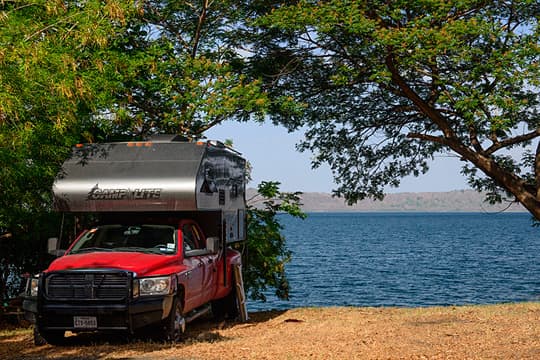
Above: Camping at Laguna de Apoyo, Nicaragua
TCM: What led you to choose a CampLite for full-time RVing?
Jorn: The wood-free 100% aluminum and composite construction. There will be no rust on this truck camper over time and, more importantly, no wood rot. All campers leak eventually so we wanted to buy a camper built without wood to avoid potential rot issues.
The camper we bought, a CampLite 8.6 is the smallest long bed model they sell. It comes with a wet bathroom, which was a must-have for my wife. We also didn’t want to have any overhang in the back to avoid issues while off-roading. The 8.6 model is actually a truck camper for a half-ton truck so our one-ton dually hardly even notices it’s there.
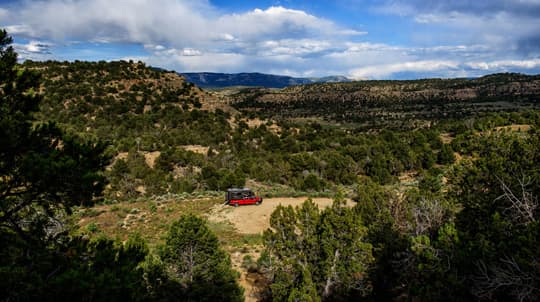
Above: Boondocking in Colorado National Forest, Colorado
TCM: We often tell readers to over-truck and under-camper, if they can. You definitely over-trucked that CampLite with the dually. Tell us about your five-month winter trip to Central America.
Jorn: Central America is a wonderful place to go camping. As opposed to everything you hear, it’s a safe place. The climate is wonderful in winter during their dry season. The different cultures are interesting to visit. The local people are very friendly towards travelers. And it’s very cheap compared to traveling in the United States and Canada.
 |
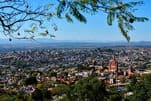 |
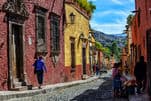 |
Above: San Miguel de Allende, a colonial town in Mexico that Jorn and Haichong visited
During our five month road trip, we visited every Central American country. The diversity of things to see and do in Central America is amazing; volcanoes, colonial towns, white sand beaches, jungle, and rain forests filled with wildlife.
We loved it so much down there that we’re thinking about heading back into Mexico this winter to explore Baja, California and hopefully to see the whales that migrate from Alaska down into the Sea of Cortez during the winter. We’re also writing a book about our Central American adventure which should be released this fall. It will be a mix of our travel experiences and travel photography.
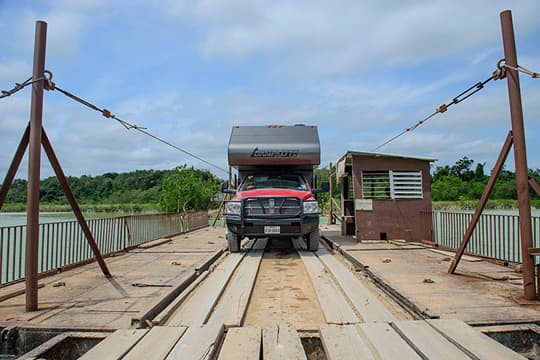
Above: Hand Cranked ferry to Sarteneja, Belize
TCM: Please let us know when your book publishes. In an email to TCM you stated, “There are so many wonderful places; especially in Mexico and Guatemala; where you really need a truck camper”. Why is a truck camper needed in these areas?
Jorn: The roads in Central America are not the same quality as the roads in the United States. Even the Pan-American Highway, which goes all the way down to Argentina, is usually nothing more than a two-lane road, filled with pot holes. We’ve seen several RV caravans in Mexico with Class A motorhomes and fifth wheels, but they stick to the expensive toll roads. Once you head south of Mexico, anything bigger than a truck camper would be very inconvenient.
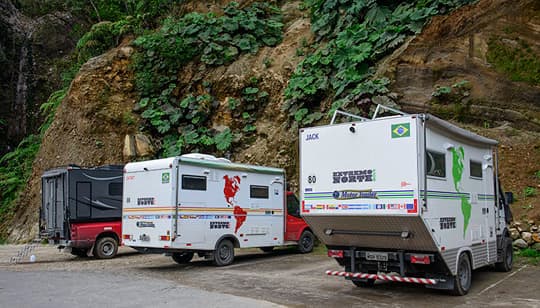
Above: The hot springs in Fuentes Georginas, Guatemala. If you camp there overnight, you’re allowed to use the hot pools after everyone leaves in the evening.
That being said, some of the best camping places in Guatemala and even in Mexico are off the beaten path. Take the beautiful hot springs of Fuentes Georginas in the highlands of Guatemala. The springs are located high in the mountains and the only road up there is a one-lane farm road. Even in our truck camper we had a difficult time getting up there, especially with farmer’s trucks coming down the mountain. Our dually being as wide as it is, it took a lot of effort to get up there. But once you get there, that’s all forgotten!
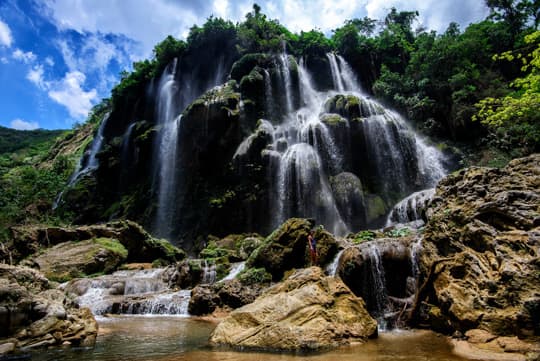
Above: The waterfalls of El Aguacero, southern Mexico
Another example is the waterfalls of El Aguacero down in southern Mexico. These are the most beautiful waterfalls we visited on the entire trip, which is saying a lot since Costa Rica and Panama have some beautiful waterfalls. But, to reach El Aguacero, you must drive a one-lane dirt road into the mountains. Again, nothing we would dream of doing in any other RV type.
And, of course, there are the many beaches. Having a truck camper on top of a four-wheel drive truck gives you easy beach access. Truck campers are the way to go.
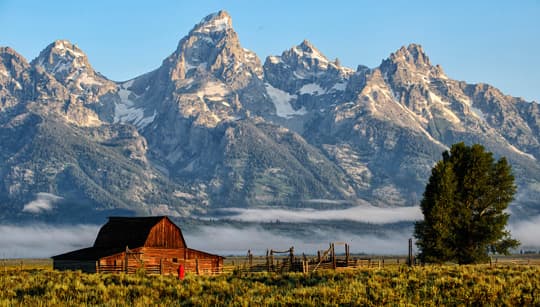
Above: Grand Teton National Park, Wyoming
TCM: What have you been doing since you returned from Central America?
Jorn: We crossed back into the United States this past June and traveled up to Alaska through the Rockies. We have spent the month of August and part of September up in Hyder, Alaska to photograph the bears and wolves that come to feast on the chum and pink salmon runs.
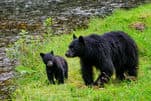 |
 |
 |
Above: In August and early September, Jorn photographed bears in Hyder, Alaska
We’ll be heading back down to the lower 48 via the Canadian Rockies and plan on spending fall in the Yellowstone and Grand Teton area to witness and photograph the fall colors and the mating season of the elk, buffalo and moose.
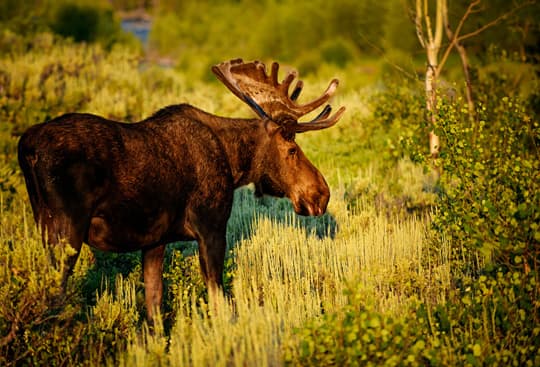
Above: Moose in Grand Teton National Park, Wyoming
After that, we’ll either settle down and start looking for a job, or extend our road trip with a few months and head down into Mexico’s Baja peninsula, which we skipped on our five month road trip last winter.
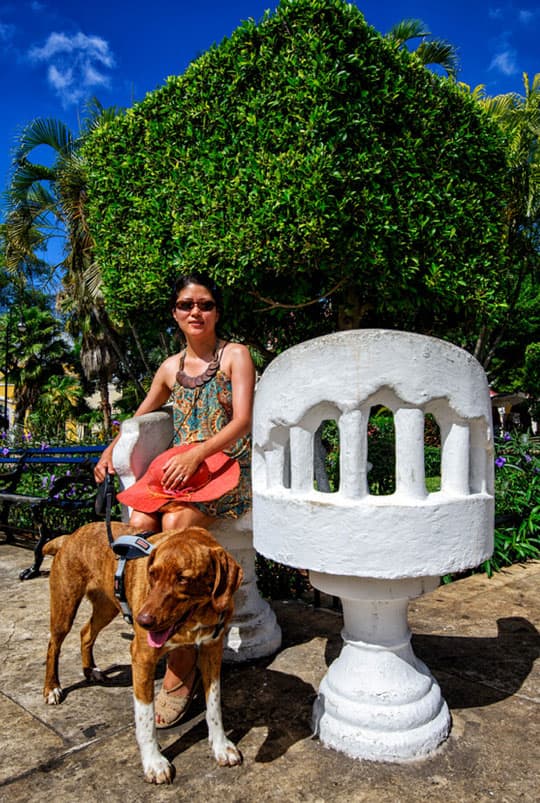
Above: Haichong with Sophie, their dog, in Merida, Mexico
TCM: Are you seriously thinking of ending your adventure, setting down, and getting jobs again?
Jorn: Well, once you start traveling, it’s hard to stop. As you meet other full-timers who are traveling around the world in their campers, you realize there’s so much more to see and so little time to do it.
We definitely want to stop traveling before we run out of money, but we also don’t want to stop if we can afford to travel more. So, our plans change on a regular basis. In fact, we don’t even make many plans.
The idea of spending the coming winter in the Baja came from my wife. Just a week ago, she thought out loud, “Do we have to settle down now? What if we try hard not to spend too much and go into the Baja?” Who am I to argue with that?
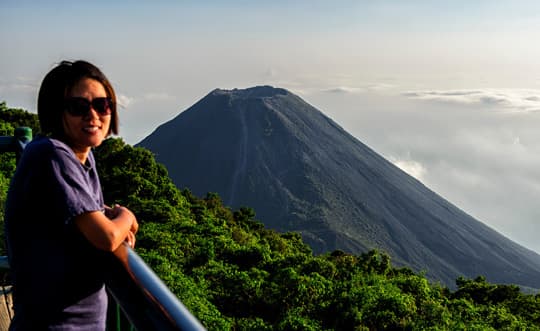
Above: Haichong at Cerro Verde in El Salvador
TCM: I think a lot of husbands reading this article are thinking you’re a very lucky guy. If we get a vote, go to Baja. Other than visiting Central America, Alaska, and the lower 48, what’s your truck camping lifestyle like?
Jorn: First, we read guide books, online travel websites, and forums. That research has provided us with a list of must-see things which we use to map out our approximate driving route.
We usually do a minimum amount of research ahead of time. We basically plan not to plan. We both love the freedom to spend as much or as little time in an area as we like. We do take side trips based on travel advice from other travelers we meet on the trip.
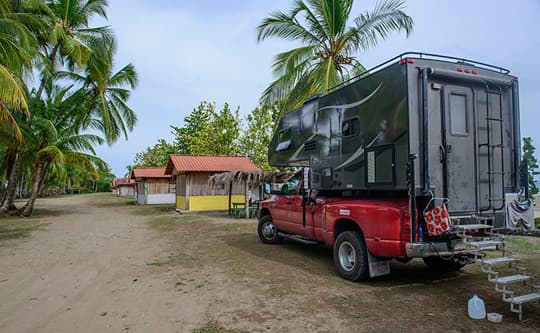
Above: Dry camping at Las Layas Beach, Panama
TCM: We call that road magic. Many a wonderful place has been discovered by someone saying, “You need to go over there, and see that”. How do you control your expenses?
Jorn: We try to dry camp whenever we can in the United States and Canada. For instance, we’ve been staying in Hyder, Alaska in the national forest for more than one month. It’s free, very scenic (next to glacial fed river) and our dog can run around freely, which wouldn’t be possible if we would stay in an RV park.
Down in Central America, we usually stick to campgrounds whenever possible, mainly for safety reasons. Down in Costa Rica and Panama however, we did lots of dry camping with no issues whatsoever.
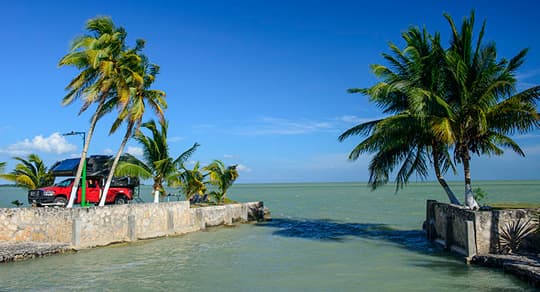
Above: Camping in Chetumal, Mexico
Once you head south of Mexico with your RV, there are hardly any campgrounds available. We asked local hotels and restaurants if we could park our RV at their establishment for the night. In the highlands of Nicaragua we slept a few nights at a Red Cross outpost and a police station.
Many times, they charge a few dollars per night which usually includes plugging in your electrical cord. The power in Central America is household 110V, which is nice for running the air conditioner. There’s no 30 amp or 50 amp service there.
To illustrate how cheap it is to camp in Central America, we camped for a few nights next to a hostel on the beach. The four dollar camping fee included showers, fresh water, and Wi-Fi. It was only four dollars for waterfront camping on the beach with almost all regular RV amenities!
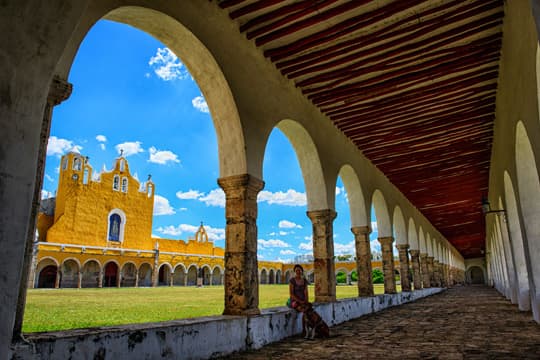
Above: The convent in the center of Izamal, Mexico
TCM: That sounds truly ideal. What’s next for your truck camping travels?
Jorn: This winter, we are debating heading down into Mexico’s Baja peninsula before settling down somewhere up in the United States and finding jobs again.
In the future, we would love to ship our camper down to South America to travel there for a year. And, further into the future, we’d love to ship our camper to Europe, visit Europe and head east through Russia all the way into Asia, and ship our camper to Australia and so on. There’s really no shortage of RVing destinations. As usual, money is the limiting factor, so hopefully we’ll be able to do these trips one day.
The freedom of full-timing is great. If you don’t like your neighbor or the area you’re in, you can move. There are so many places to discover in the world, places that are really not possible to see if all you have available each year is two or three weeks of vacation time.
We will full-time travel as long as we can. It will take a period of adjusting once we settle down again.
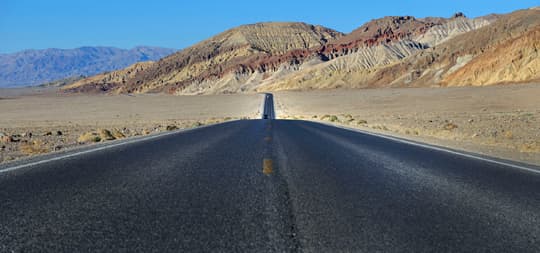
Above: The freedom of the open road, Death Valley National Park, California
TCM: We had a similar experience after only six-months on the road. It is a challenge to return, settle-down, and get back to work.
Jorn: We moved from a 2,300 square foot house into a travel trailer and then went even smaller into a truck camper. Sure, a big house is great to store all of your stuff; or even a fifth wheel with an island kitchen, but ultimately we thought about what we need. In the end, we don’t need much, especially if we get to travel around the world.
The people you meet, the cultures you experience, the animals you see, and the landscapes you encounter are priceless! It’s really amazing that it’s out there, available to all, yet experienced by so few.
Truck: 2008 Dodge Ram 3500
Camper: 2014 CampLite 8.6
Tie-downs/Turnbuckles: Happijac
